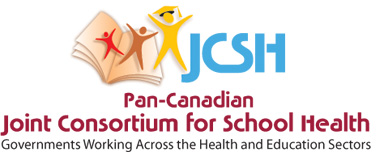Addressing Student Use of E-cigarettes and Other Vaping Products
Youth tobacco use has suddenly increased in Canada since the introduction of the JUUL devices in summer 2018. The rapid uptake of e-cigarettes and other vaping devices has reversed a trend of declining teen tobacco use in the country, to the point where public health officials are declaring the issue to be‘alarming’. This toolkit provides tools and resources for school staff, who are working to address the use of e-cigarettes and other vaping products in schools. The toolkit outlines opportunities for action that can be taken by various school staff, along with resources and tools to help.E-cigarettes and other Vaping Products E-cigarettes are battery-powered devices that allow users to inhale, or vape, aerosolized liquid (e-juice). E-cigarettes, “vapes”, vape or hookah pens, e-pipes, and other vaping products recently surpassed conventional cigarettes as the most commonly used tobacco product among youth so it is critical that publichealth officials and the general public understand the potential risks of using them.Nearly all e-cigarettes contain nicotine. Nicotine is highly addictive andcan harm the developing adolescent brain. Because the brain is still developing until about age 25, youth and young adult exposure to nicotine can lead to addiction and disrupt attention and learning; no amount of nicotine is safe for youth.In the past year, concern about the health impacts of vaping and e-cigarettes, particularly for youth, has led to more awareness of the importance of a comprehensive school health approach to this issue.There are four aspects or components to a comprehensive school health approach:Teaching and Learning, Social and Physical Environment,Policy,and Partnerships and Services. All four are necessary and helpful in schools’ efforts to support youth and respond to the escalating use of vaping in schools.
Teaching and Learning Ensure that all educators have reviewed Health Canada fact sheets about vaping.Vaping: Get the Facts Infographic: Vaping – The Mechanics Health Canada Statement on Use of Vaping Products by Youth
Engage students in researching the emerging evidence on vaping and provide opportunities for them to share this information withtheir peers.High school students’ vaping documentary brings puff of changeConsider the consequences of vapingVaping Nicotine can Alter Teen Brain DevelopmentUse current, relevant, youth friendly classroom resources that include the harms of nicotine and e-cigarette use. Curriculum supports may include the following resources:Talking with Teens About Vaping: A Tip Sheet for TeachersThe Longterm Impacts of Vaping Are Unknown – PosterVaping Awareness Activity SheetSocial and Physical EnvironmentEnsure that the social and physical culture of your school focuseson preventing problematic substance abuse by championing schoolcommunity wellbeing initiatives.What Can School Communities Do?Promote student leadership through grant opportunities.Micro-Funding For Cannabis and Vaping Public Education: 2019-2020Call for Proposals
Provide opportunities for youth to be engaged in the issue ofvaping through co-curricular and extra-curricular opportunities.Youth Engagement ToolkitPolicyEnsure that your school, district, or provincial policy or legislationon smoking includes vaping.Use current evidence to inform policy and guidelines. A number ofprovinces have developedfactsheets from the Provincial Patterns in E-Cigarette Use (2016/17 Canadian Student Tobacco, Alcohol and Drugs Survey (CSTADS)).Ensure that students and parents are aware that vaping is treatedthe same way that tobacco use is at school.Partnerships and ServicesUse Parents and Family Members as Primary Partners: Parentresources also provide valuable information.Talking with Your Teen About Vaping: A Tip Sheet for Parents (underreview)Vaping and Youth: Fact Sheet for Parents (August 2018) (BC – InteriorHealth)Seek out resources from partners in your own province orterritory, as well as national supports.
Vaping 101 – PPt Presentation (ON – Wellington-Dufferin-Guelph PublicHealth) E-Cigarettes, Vaping Products and Flavoured Tobacco (New Brunswick Anti-Tobacco Coalition)Know the Risks: Vaping and PEI Youth (PEI Tobacco Reduction Alliance- PETRA)E-Cigarettes in Canada (October 2018) (Heart and Stroke Foundation)Think Before You Vape (aimed at teens) (June 21 2016) (CanadianCancer Society)Stay up to date with news items.Some of the most recent ones include how the language is changing onterms such as vaping, increasing the challenge for public health andyouth health advocates:Teens say they don’t vape, they Juul, making e-cigarette use hard to track (April 29 2019)So, your teenager is vaping: Here’s what you can do (January 19 2019)E-cigarettes, “Vapes”, and JUULs: What Schools Should Know (PDF)(American Lung Association)
Comprehensive School Health is anapproach to student and schoolcommunity well-being and achievementthat believes healthy students are betterlearners. It also believes that all childrenand youth must thrive in schoolcommunities committed to optimallearning, health, and well-being.
